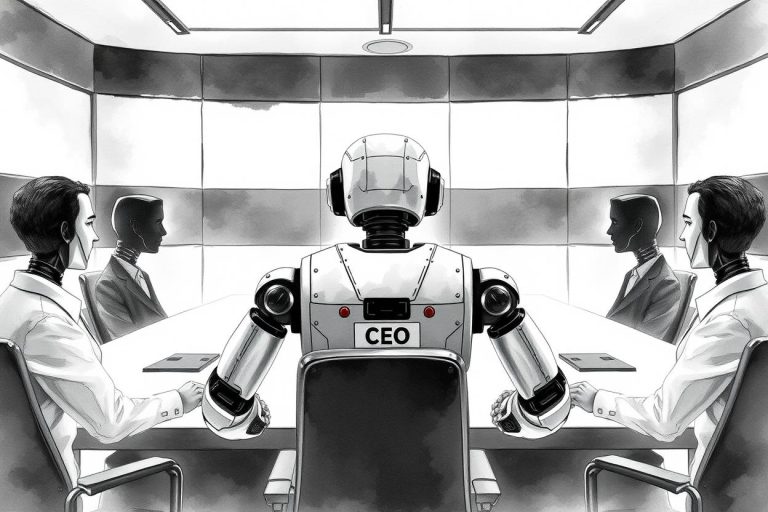Streamlining workflows: AI automation and monitoring

Every organization aims to accomplish more in less time, but the challenge lies in accelerating productivity without sacrificing quality. This is where AI automation and monitoring step in. By handling repetitive and time-consuming tasks, AI frees up your team to focus on more strategic work.
Meanwhile, monitoring software continuously tracks these automated processes, ensuring everything runs smoothly and meets standards. This dual approach not only boosts efficiency but also reduces the risk of costly errors, ensuring a seamless workflow. In this article, we’ll explore how AI automation, paired with effective monitoring, can transform your processes for optimal performance.
What AI Automation Means for Businesses
AI automation is not about shiny new objects; it’s about getting things done better. It displaces automated work by using artificial intelligence to make the hours of effort unnecessary for manual work. This can involve practically anything from the simple handling of emails to the scheduling of your calendar or even the consideration of invoices.
All these tasks can be accomplished with AI, and it does this on a clock—around the clock, round the year. The result? Less of your team’s time is spent wading through paperwork and spending more time working towards strategic goals. Moreover, with the help of AI and employee monitoring software, one can train the computer to identify which tasks should be completed and ensure the productivity of the workflow, providing businesses with valuable information.
Why AI Automation Improves Efficiency
AI is more than a mere replicator of actions—it evolves over time, making it highly effective in workflow systems. It can store vast amounts of data, predict future needs, and even suggest improvements for more efficient processes. For example, in customer support, AI chatbots handle basic inquiries, seamlessly escalating more complex issues to human agents. This blend of speed and intelligence ensures rapid responses while minimizing errors, resulting in a streamlined workflow and better customer experience. By continuously learning from interactions, AI becomes a valuable partner in optimizing operations.
Monitoring Software: The Backbone of Efficient AI Automation
Monitoring software is the watcher of systems, the overseer of AI automation. It ensures that automated processes perform as expected. Here’s why monitoring software is a crucial piece of the puzzle:
- Early Problem Detection: Monitoring tools instantly alert you to any issues, no matter how minor, allowing you to address them before they escalate into larger problems.
- Performance Tracking: These tools continuously track system performance, highlighting areas where automation can be further optimized using AI, enabling a more efficient workflow.
- Anomaly Detection: Acting as a security layer, monitoring software identifies unusual activity and safeguards critical data, preventing potential breaches or disruptions.
- Continuous Improvement: By collecting data over time, monitoring tools reveal opportunities for small adjustments that can enhance the overall efficiency of AI processes.
- Maintaining Workflow Consistency: By ensuring that automation systems remain stable, monitoring reduces downtime, minimizes disruptions, and keeps processes running smoothly, maximizing productivity.
Integrating AI automation and monitoring

Choosing the Right Tools
Integrating AI automation and monitoring begins with selecting the right tools. It’s crucial to find a combination that aligns with your specific business needs, as not all software solutions offer the same features or capabilities. When evaluating AI automation platforms, prioritize those that are flexible, easy to customize, and can seamlessly integrate with your existing systems. Additionally, choose a monitoring tool that can effectively track performance, provide actionable insights, and suggest improvements without compromising system speed or efficiency. The goal is to achieve optimal results as efficiently as possible, ensuring smooth operations and continuous improvement.
New business owners often feel overwhelmed with the possibilities, especially where technology is involved. Using SIMATIC HMI Control panels for automation, machinery for warehousing, programs for design – it’s all a big list of expenses and it can easily put off even the most savvy of thinkers from starting out on their own. There are worries and concerns no matter what, and yet, these shouldn’t stop you!
Creating a Seamless Workflow
Integration is not just about linking two systems but creating a seamless process according to people’s preferences. Select general tasks that you want to automate. Next, establish control points on the way to detect all the glitches. For instance, if you are using automation in responding to customer inquiries, be sure to have your monitoring software record response rates and response time. That way, it’s easier to tweak the AI to make sure it is providing the results you want from it.
Testing and Adjusting
Once you have implemented your AI automation and monitoring solutions, you need to know that they will not be flawless. Testing is crucial. In practice, one must conduct simulations to determine how the AI behaves under various circumstances. Make your changes using the data gathered from your monitoring software. Often, it is shown that with minor changes in the processes, it is possible to achieve a much greater efficiency. It is important to control what is important here, whether time, error frequency, or accuracy.
The Productivity Impact: Quantifying the Benefits
The productivity that comes with AI automation when it is linked with AI monitoring cannot be compared. Here’s a breakdown of the key benefits:
- Time Savings: Approximately 73% of businesses that have implemented AI for at least one operational area report significant time savings, especially in automating repetitive tasks like data entry and customer support. These time savings often translate to more strategic use of employee time, allowing workers to focus on higher-value tasks.
- Error Reduction: AI can help reduce human errors by up to 30% when applied to data processing and analysis tasks. This leads to more consistent and reliable results, especially in areas like finance and data management, where precision is critical.
- Cost Reduction: Businesses using AI across multiple functions have reported operational cost savings of around 20-30%. This is largely due to the dual advantage of automation handling routine tasks and AI-driven monitoring systems detecting potential issues early, preventing costly errors.
- Customer Service: AI has had a major impact on customer service, reducing response times by more than 60% Automated chatbots and virtual assistants are able to handle basic queries round-the-clock, improving customer satisfaction while allowing human agents to focus on more complex issues.
- Scalability and Efficiency: With AI-enabled automation, companies can scale their operations without the need for extensive new hiring. Research indicates that AI can perform the work equivalent to 2.1 full-time employees in small and medium-sized businesses contributing to better resource management and long-term sustainability.
Maximizing Success with a Practical Tip
In conclusion, avoid rushing into integration—take the time to plan thoroughly. Depending on your needs, a phased approach may be more effective. Start with automating simple, basic tasks, then analyze the results before moving on to more complex processes. This approach minimizes disruptions and allows for fine-tuning at every stage.
Remember, AI automation is a long-term commitment. It’s not a set-it-and-forget-it solution; it requires continuous monitoring and adjustment. The true value of AI lies in its adaptability—refining processes based on insights from your monitoring systems. Focus on what drives productivity, be ready to pivot when necessary, and view AI implementation as a continuous journey. Those who embrace this mindset are the ones poised to benefit the most from AI.




